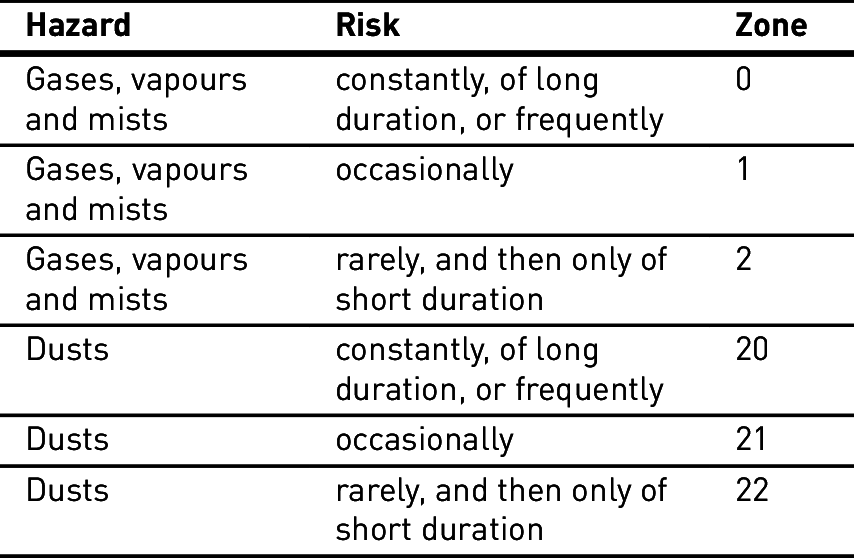Any assessment regarding the presence of explosion hazards, i.e. whether or not hazardous explosive atmospheres can develop, must be related to the individual case at hand. Explosions with hazardous consequences can occur when the following four preconditions are fulfilled simultaneously:
High degree of dispersion of flammable substances
Concentration of flammable substances in the air within their explosion limits
Hazardous quantity of explosive atmosphere
Effective source of ignition
